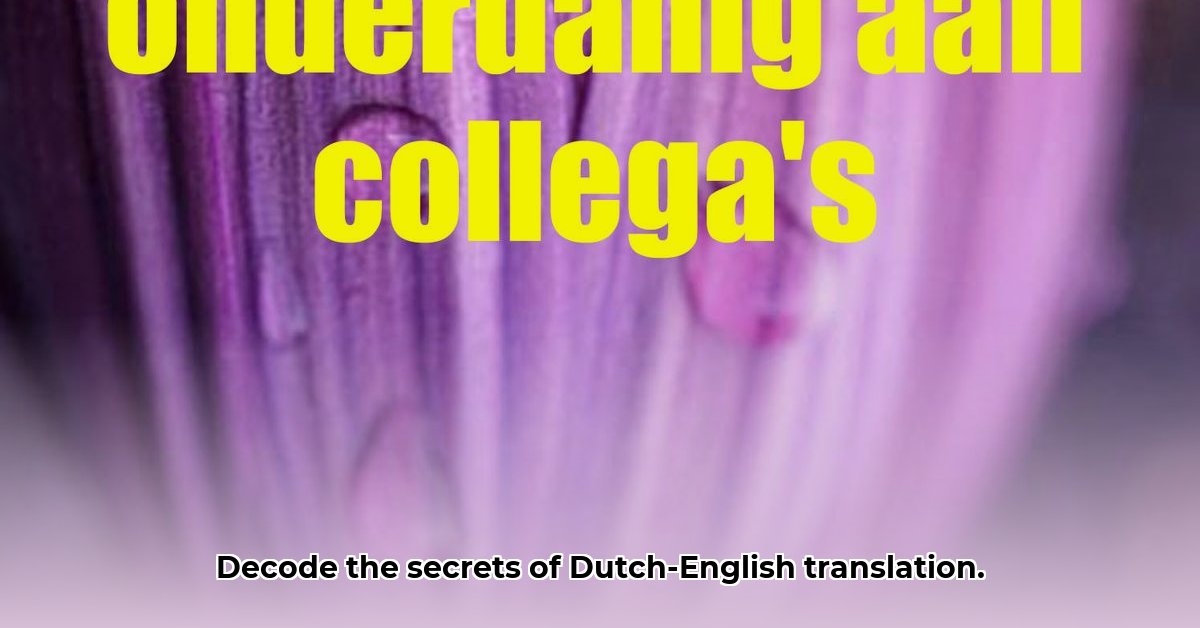
Onderdanig: More Than Meets the Eye
The Afrikaans word "onderdanig" presents a significant challenge for translators. A simple substitution with "submissive" or "obedient" in English often falls short, missing the deeper cultural and historical connotations embedded within this seemingly straightforward term. This article delves into the complexities of translating "onderdanig," highlighting the crucial role of context and offering a practical guide for achieving accurate and nuanced renderings. Understanding the various shades of meaning inherent in "onderdanig" is paramount for effective communication.
Decoding a Deeply Rooted Word
"Onderdanig," meaning "submissive" or "obedient" at its most basic level, carries much more weight than a direct translation suggests. Its meaning is profoundly shaped by the context of its use – the situation, the relationship between those involved, and even the historical period. This contextual dependence makes "onderdanig" a chameleon-like word, adapting its meaning to fit its surroundings and leaving translators with a conundrum. Successfully translating this term calls for more than just vocabulary knowledge; it requires a deep understanding of its cultural significance.
The Many Faces of "Onderdanig"
Consider these contrasting scenarios: a child exhibiting "onderdanig" behaviour towards their parents – often viewed as respectful obedience – and an individual behaving "onderdanig" under a tyrannical regime – conveying a sense of oppression and fear. These diverging interpretations reveal the word's inherent flexibility. Synonyms such as "deferential," "compliant," or even "obsequious" might appear suitable, yet they may not fully capture the intended meaning. The translator must carefully choose the word that best reflects the specific nuance within the given context.
Context is King: The Key to Accurate Translation
Successfully translating "onderdanig" hinges on a comprehensive contextual analysis. The grammatical role of "onderdanig" within a sentence is crucial. Is it functioning as an adjective describing a personality trait (e.g., Hy was 'onderdanig') or as an adverb describing an action (e.g., Hy het 'onderdanig' opgetree)? This grammatical distinction significantly impacts the appropriate English translation, affecting the subtlety and overall meaning conveyed. Therefore, grasping the grammatical function is vital before attempting a translation.
History's Long Shadow: The Weight of the Past
The historical context intertwined with "onderdanig" cannot be overlooked. Its association with "onderdaan" (subject) connects it to historical power structures and social hierarchies. The word's use during the apartheid era, for instance, carries layered implications and unspoken meanings which are impossible to ignore for an accurate translation. Sensitivity to this history is vital for a meaningful rendition in English. Failing to account for the historical weight might lead to an inaccurate or insensitive interpretation in the target language.
Dictionary Dilemmas: A Tale of Two Interpretations
Different dictionaries offer varying interpretations of "onderdanig," reflecting the word's multi-faceted nature. While most agree on the core meanings of submission and obedience, the degree of subservience implied can vary considerably. Certain dictionaries might even suggest synonyms like "honds" (dog-like) or "slaafs" (slave-like), presenting a far more negative connotation than others. This discrepancy reinforces the importance of selecting the most fitting translation based on the specific context.
A Practical Guide to Translating "Onderdanig"
Translating "onderdanig" involves much more than simply finding a direct English equivalent; it demands a deep understanding of its contextual implications. The art of translation in this case is about capturing the essence of the original message, not merely substituting words. Successful translation relies on holistic comprehension, rather than a simple word-for-word swap.
A Translator's Roadmap
Follow these steps for accurate translation:
Grammatical Analysis: Determine the grammatical role of "onderdanig" within the sentence (adjective, adverb, etc.).
Contextual Examination: Analyze the sentence's meaning, considering who is speaking and their relationship with the recipient.
Historical Sensitivity: Assess the potential influence of historical context and its relevance to the word’s meaning.
Word Choice Refinement: Carefully choose the English word(s) best conveying the specific nuance of meaning.
Review and Revision: Ensure the translation accurately captures the original intention and maintains the desired tone.
Mastering the translation of "onderdanig" requires a keen awareness of its subtleties. It's a rewarding challenge that demands careful consideration of context and nuanced meaning. It is a process of understanding the word's intricate layers rather than simply finding a substitute. Ongoing research and sensitivity to the target audience are essential for producing accurate and culturally appropriate translations.
Key Takeaways:
- "Onderdanig" is a context-dependent word, its meaning varying greatly depending on the situation.
- Accurate translation requires a thorough understanding of cultural and historical implications.
- Careful word choice, sensitive to tone and nuance, is crucial for a successful rendering.
- Seeking expert advice can be beneficial when contextual ambiguity arises.